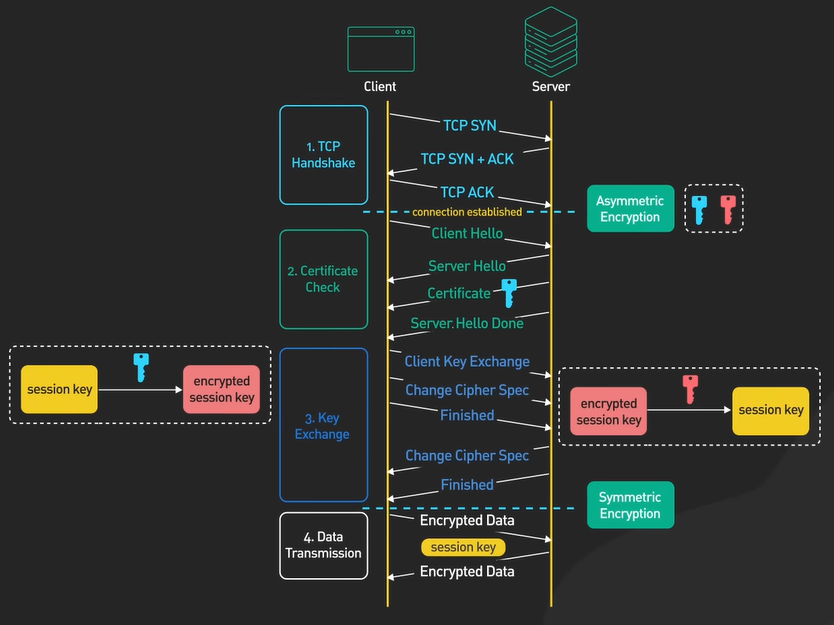It is a stateless application layer protocol
Used for the transmission of resources (HTML, CSS, JS, etc.) over TCP connection
Uses client server model for communication
Resources are uniquely identified using a URL/ URI
HTTPS Connection Setup

Step 1:
TCP (Transmission Control Protocol)
TCP Three-Way Handshake
Step 2:
Client Hello: TLS Version, Cipher Suite Supported, etc.
Certificate: Public Key of Server
Client verifies the certificate using its Certificate Authority (CA) to ensure its valid
Step 3:
There a different ways to complete this step the easiest is using RSA algorithm
Client encrypts session token using Public Key of Server
Server received packet and decrypts using its Private Key
TLS 1.3 does not support RSA and instead using Diffie-Hellman Algorithm
Step 4:
Encrypted Communication between Server and Client
Symmetric Encryption is used has it is computationally less expensive for sharing continous streams of data
HTTP Versions
HTTP 1.0
Reset Connection after every request
HTTP 1.1
Keep connection open until all resources are fetched
Can only fetch single resource at a time
Added support for pipelining which allows client to send multiple requests at once
The request also had to be received in the same order
Was difficult to implement and had other issues (Head-of-line Blocking) hence was eventually removed
HTTP 2.0
Added Streams which allows to send multiple streams of data in a single TCP connection
Each stream is independent of each other and can be received in any order
Allows to request multiple resources at the same time
HTTP 3.0
New protocol that uses QUIC instead of TCP
QUIC is based on UDP protocol
All quick streams share the same connection and hence multiple handshakes are not required
QUIC has an concept of Connection ID which allows uses to switch networks quickly and reliably
HTTP Requests
Sample Request : GET /home.html HTTP/1.1
HTTP Method : Used to specify what the client should do
HTTP Version : Version of HTTP
Path : Location of file/ document
HTTP Headers
HTTP Responses
Sample Response : HTTP/1.1 200 OK
HTTP Version : Version of HTTP
Status Code : Code specifying the status of the request
HTTP Headers